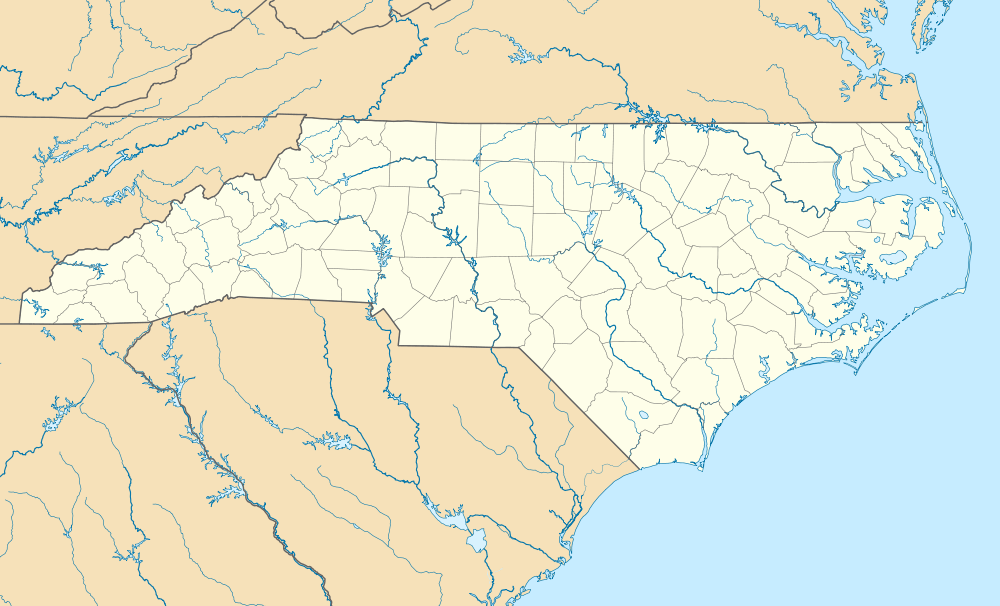Playmakers Theatre
The Playmakers Theatre, originally Smith Hall, is a historic academic building on the campus of the University of North Carolina at Chapel Hill. Built in 1850, it was designated a National Historic Landmark for its architecture, as an important example of Greek Revival architecture by Alexander Jackson Davis.[2][3] It is now a secondary venue of the performing company, which is principally located at the Paul Green Theatre.
Playmakers Theatre | |
 Historic Playmakers Theatre, a National Historic Landmark and former home to the Carolina Playmakers theater group | |
  | |
| Location | Cameron Ave., Chapel Hill, North Carolina |
|---|---|
| Coordinates | 35°54′43″N 79°3′2″W |
| Area | less than one acre |
| Built | 1850 |
| Architect | Davis, A.J.; Town & Davis |
| Architectural style | Greek Revival |
| Part of | Chapel Hill Historic District (ID71000604) |
| NRHP reference No. | 71000605 |
| Significant dates | |
| Added to NRHP | June 24, 1971[1] |
| Designated NHL | November 7, 1973[2] |
| Designated CP | December 16, 1971 |
Description and history
The Playmakers Theatre building is located in the northern portion of the UNC campus, on the south side of East Cameron Avenue next to the College of Arts and Sciences, and across Cameron from Old East, also a National Historic Landmark. The building has the form of a Greek temple, built out brick with a stuccoed exterior. At its eastern end is a gabled portico, supported by fluted columns that have Corinthian capitals modified to include ears of corn and leaves of tobacco, two important North Carolina crops. The gable is fully pedimented, with modillioned eave and rake edge. The walls of the building have pilastered bays, the pilasters supporting a simple entablature.[3]
Smith Hall was built in 1850, as part of a campus improvement plan begun in the 1830s. Andrew Jackson Davis had been retained to oversee alterations to Old East and Old West, and develop an overall plan for the campus. Its original purposes was as a social venue.[3] After also being used as a laboratory, bath house, and law school, it became a theater in 1923. The Theatre is the perpetual home of the Carolina Playmakers, although as their successor, the Playmakers Repertory Company uses Paul Green Theatre as their primary venue.[4][5]
See also
References
- "National Register Information System". National Register of Historic Places. National Park Service. April 15, 2008.
- "Playmakers Theatre". National Historic Landmark summary listing. National Park Service. Archived from the original on 2009-06-20. Retrieved 2008-06-19.
- Walls, John B. (April 7, 1971). "National Register of Historic Places Inventory-Nomination: Playmakers Theatre" (pdf). National Park Service. Cite journal requires
|journal=(help) and Accompanying photos, exterior and interior, from 1971 (32 KB) - "Historic Playmakers Theatre". Campus Venues. Carolina Performing Arts. Retrieved 2008-03-08.
- "Playmakers Theatre". National Historic Landmarks Program. National Park Service. Archived from the original on 2009-06-20. Retrieved 2008-03-08.
| Wikimedia Commons has media related to Playmakers Theater UNC. |
